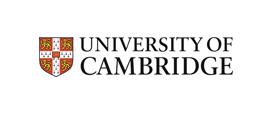What is 3D Printing?
A collection of resources that support the teaching of what 3D printing / additive manufacturing is, how it is used and what it can be used to make.
- ALL
- Teacher guidance
- Article
- Activity sheet
Teacher guidance
What is 3D printing?
This video provides a great overview to 3D printing, looking first at different ways of manufacture, before explaining the 3D printing process. The video is presented by the Head of the Institute for Manufacturing, Professor Tim Minshall, and would well as an introduction to 3D printing or as a revision video for manufacturing methods in design and technology.
Article
Printing in Three Dimensions
This Catalyst article looks at 3D printing, a new technology which is rapidly finding applications. Although probably too slow for mass production it is useful for producing prototypes and tailor-made items. In a 3D printer, layers of polymer beads are printed one on top of the other. Heat melts the polymer beads so that they form a solid structure. A powder is used to fill spaces where no polymer is required and is removed later.
Activity sheet
3D Printing, a new and emerging technology
This lesson resource provides teacher notes for delivering a lesson that places 3D Printing as a new and emerging technology. It looks at how 3D printers work and provides a student assessment.
How is 3D Printing used in society?
This lesson teaches students different uses of 3D printing and highlights the three main parts to the 3D printing process (I.e. design, slice, print).
An introduction to 3D printing
his package of resources by Learnbylayers provides a comprehensive introduction to 3D printing, where it is used in the wider world and why it is used to manufacture certain products. Students design an object, slice and print it and learn about the basics of 3D printing. The materials can be taught in class or used as extended learning for homework or self-guided learning.




